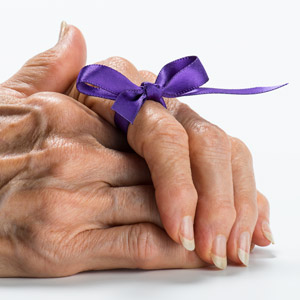By Ellen Fink-Samnick
We all know the cost of care at the end of life (EOL) tends to be needlessly wasteful. And we know that, too often, the wishes of patients are ignored, or worse, unknown. As the healthcare system adopts a patient-centered approach, it is important we ask every dying patient and their family what they want. When we do, we find that most would say they want less care and more quality of life in their final days. This is especially pressing today for three reasons
1. There is heightened emphasis on palliative and EOL care, in part, because of Institute of Medicine’s report last year, Dying in America: Improving Quality and Honoring Individual Preferences Near the End of Life1. In it, experts on death and dying made bold recommendations about how hospitals and healthcare professionals should address palliative and EOL care.
2. Officials from the federal Centers for Medicare & Medicaid Services, Baltimore, said, in July, it would pay physicians to conduct EOL counseling and start a pilot project to pay for hospice care and treatment instead of one or the other. At the end of the four-year project, CMS will evaluate whether it’s better to continue the current form of reimbursement or pay for both.
In this new program, 150,000 dying patients on Medicare will be allowed to choose hospice care to manage pain and suffering, get EOL counseling and medical treatments – including hospitalization – to help them battle illnesses, according to The New York Times2. Research shows that patients, who get palliative care and traditional medical care, have better quality of life and less intense medical care, resulting in lower costs, the newspaper reported.
It’s likely that CMS officials know that providing appropriate care for dying Medicare patients could control some of the steep EOL costs when the healthcare system does what it normally does: provide heroic measures to keep patients alive whether they want or need that.
In a study published in Health Affairs3, researchers at the Brookdale Department of Geriatrics and Palliative Medicine at Mount Sinai, New York, showed considerable savings when patients with terminal illness are enrolled early in palliative and EOL care programs.
If 1,000 Medicare beneficiaries are enrolled in hospice within 15 to 30 days before death, CMS could save more than $6.4 million and those patients would be spared 4,100 hospital days. If 1,000 dying Medicare patients enrolled in hospice within 53 to 105 days before death, the savings would be more than $2.5 million, adds the study.
3. Brittany Maynard put the importance of end of life care into the news last year. The 29-year-old newly married teacher and resident of California became interested in assisted suicide after her diagnosis with terminal brain cancer in 2013. Under California law, this option wasn’t available. So, she and her husband rented a home in Oregon, which allows assisted suicide. A year later, at least 13 states are pursuing what is called “death with dignity” legislation. Oregon, only Montana, New Mexico, Vermont, and Washington State currently have such laws.
Given these significant developments, it may be more important than ever for healthcare professionals to ask what patients want in terms of palliative and EOL care. When we fail to ask, we are, by definition, no longer providing patient-centered care. Instead, we’re doing what the healthcare system has always done: provide lots of care whether it meets patient needs or not and wasting precious resources in the process.
Fixing this problem shouldn’t be that difficult. We simply need to make sure we’re delivering patient-centered care. To do that, we need to ensure the patient and family are fully engaged in care delivery. But, as we have seen in the past, members of the care team may not be prepared to talk about death and dying. After all, most went to school to learn to care for the living and keep them alive.
Has the care team talked with the patient about what he or she wants? If there was such a conversation, was the family included? Did the care team discuss what the patient wants without the patient being present?
The patient-engagement step is easy to overlook. Healthcare providers, not trained to talk about death and dying, don’t know how to do it; or believe it’s someone else’s job. So, the first step is to ensure that someone lets the hospital or health system know what the patient wants. In many facilities, this falls to the case manager or social worker who ensures the patient gets what he or she needs from the health system.
James McGregor, MD, an expert in palliative and end of life care and senior medical director for Sutter Health, Sacramento, Calif., says, “Addressing the full spectrum of psychosocial, emotional, physical and spiritual needs helps to raise patient and family satisfaction and prolong life. Patients and family members often have questions about palliative and EOL care and need someone to answer them.”
Those who work in palliative and EOL know the value of engaging patients and their families to guide them through these difficult times, explaining an illness and planning. And, they are likely to create a more sustainable healthcare system.
Complete Article HERE!

